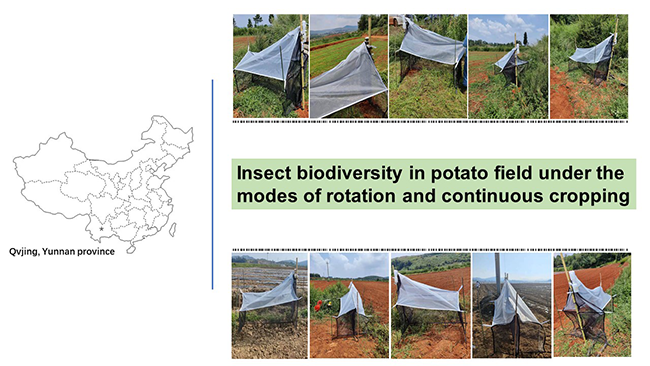Using DNA Metabarcoding for Assessing Biodiversity of Insect Pests and their Natural Enemies

Globally, it is estimated that there are approximately 5.5 million species of insects. With only 1 million insect species named, this suggests that 80% remain to be discovered.
The identification of insects based on morphological characters is a challenging task that often requires experienced taxonomists. These morphology-based procedures are usually time-consuming and may not always provide resolution to the species level. In addition, hundreds or possibly thousands of species become extinct each year, and conservation of biodiversity depends upon ongoing monitoring efforts which can explain patterns of distribution and abundance of species and populations.


DNA barcoding, the characterization of sequence variation in a fragment of cytochrome c oxidase I gene, has gained global acceptance for specimen identification and species discovery. This method circumvents the limitations of morphology by identifying unknown insects by matching their barcode sequences to reference sequences.
DNA metabarcoding is a developing approach that identifies the species present in a mixed sample (bulk DNA) based on high-throughput sequencing (HTS) of a specific DNA marker (Figure 1). It differs from conventional DNA barcoding, because HTS allows taxonomy to be assigned to hundreds or even thousands of species in a bulk sample. Now, DNA metabarcoding is rapidly emerging as a cost-effective approach for large-scale biodiversity assessment and insect monitoring.

Sino-American Biological Control Laboratory (Sino-ABCL) researchers employed metabarcoding to assess diversity of insect pests and their natural enemies in crops planted in the different kinds of geographic environments in China. From 2019, Sino-ABCL started to analyze the composition of the insect communities in potato and maize in Yunnan (Figure 2), citrus orchards in Jiangxi (Figure 3), and grassland in Inner Mongolia (Figure 4) in China using DNA metabarcoding.
Species revealed by DNA metabarcoding were classified to pests, parasitoids, predators and pollinators. The study presents the first baseline data on insect biodiversity in potato, maize and citrus plantations as well as grassland in China which offers a valuable resource for research in a broad range of areas such as beneficial insect exploration, pest management and monitoring.
Contact: Chenxi Liu
The Sino-American Biological Control Laboratory (Sino-ABCL) was established in 1988 through an agreement between USDA ARS and the Chinese Academy of Agricultural Sciences (CAAS) and is based in the Institute of Plant Protection in Beijing. The objective of the Sino-ABCL is to search for, identify, and evaluate the potential of natural enemies of pest insects, weeds, and plant diseases that affect Chinese and U.S. agriculture, develop biological control agents, and evaluate biodiversity of insects based on DNA barcoding. Sino-ABCL established a collaborative working group with local collaborators, most of whom are from local agricultural research units, academies, and universities from 30 provinces in China. These collaborators help Sino-ABCL researchers conduct field surveys for biocontrol agents across China. Sino-ABCL has more than 30 years’ experience in classical biological control and other areas of pest management targeting species that include Asian Longhorn Beetle, salt cedar, soybean aphid, wheat stem sawfly, leafy spurge, emerald ash borer, brown marmorated stink bug, spotted wing drosophila and roseau cane scale. As a fundamental part of its research program, Sino-ABCL conducts studies in insect physiology, insect taxonomy, and insect biochemistry and molecular biology.
